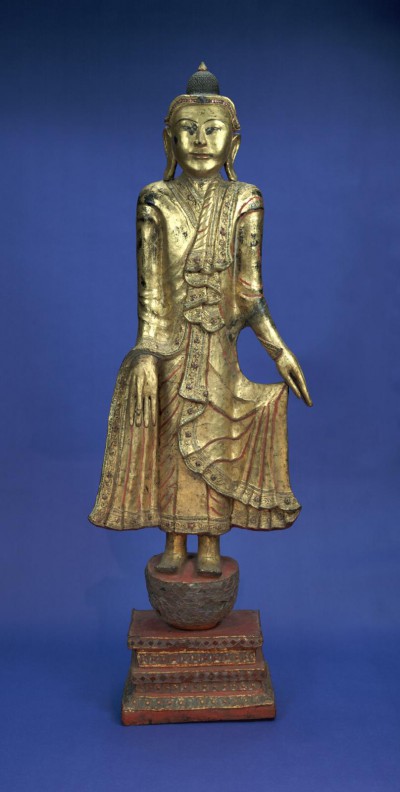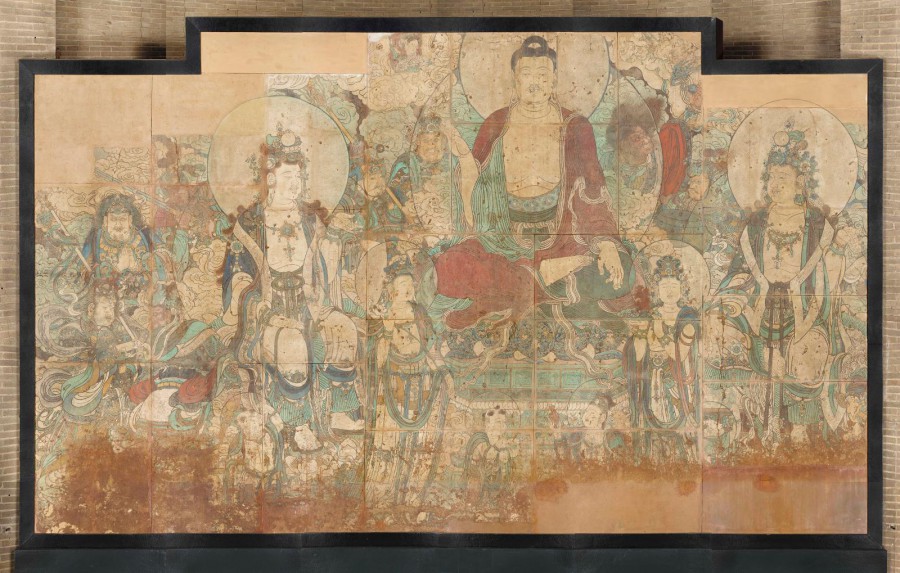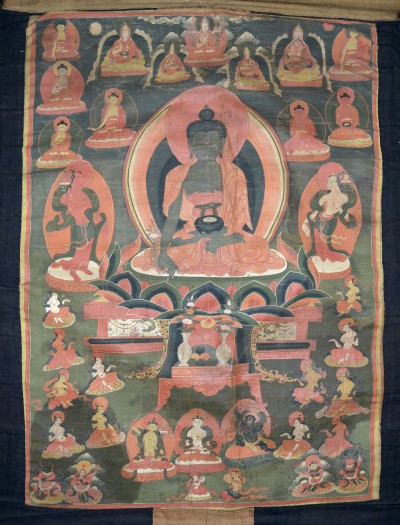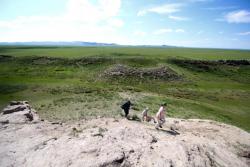From June to December 2015, the Institute of Cultural Relics and Archaeology, Inner Mongolia, and other units carried out rescue excavations on a Liao Dynasty cemetery in Xilingol, Duolun County, Xiaowangligou. Those rescue excavations salvaged two Liao Dynasty tombs (M1 and M2).

Tomb M1 had a total length of 25.6 meters, which included the passage leading to the tomb, the tomb doorway, a vaulted passage leading to the chamber, the chamber, and other tomb components. The passage leading to the tomb was 19.8 meters long, 1.5-4.6 meters wide; the arch doorway appeared to be made of wood, and wood and bricks were used to build the five brackets-and-blocks [interlocking wooden brackets used in traditional Chinese architecture]. Glazed tiles also decorated the tomb entrance, reflecting the high status of the tomb’s occupant. The vaulted passage leading to the chamber was rectangular, 2.60 meters long, 2.1 meters wide. The tomb chamber, made of brick, was round, with a diameter of 4.80-5.22 meters, and decorated with outer coffin. The outer was built by square timber as octagonal shape, and the topmost part was already gone. The chamber floor was paved with square brick and brightly colored red and white jade-bi-shaped pattern, with cinnabar outlining the shape of lotus petals in the center, giving the chamber a gorgeous character.
The tomb showed evidence of repeated disturbances and thefts, yet excavations still unearthed a large amount of funerary objects, mainly copper, iron, porcelain, amber, and silver. Parts of a horse harness, with gilding silver double-dragon design, were discovered. Most of the unearthed funerary objects were porcelain, including misty blue porcelain and Ding kiln white porcelain.

Tomb M2 consisted of a passage leading to the tomb, a vestibule, wooden-imitation structure doorway, a vaulted passage through to the tomb chamber, and the tomb chamber itself. The passage leading to the tomb was sloped, 23 meters long and 2-7 meters wide, and the tomb entrance was a brick span-arch. The vaulted passage, located north of the tomb chamber, was slightly rectangular with a domed brick roof. The tomb chamber was circular with a diameter of 3.92-4.28 meters, built of greenish blue bricks. There was a wooden outer coffin with a decorated dome top. The tomb had an overall length greater than 40 meters and a maximum depth of 11 meters.
The coffin in tomb M2 was located in the northern part of the tomb chamber on a funeral dais made of brick. The front of the funeral dais had seven lotus images that had at one time been brightly painted in the center. The coffin on the brick funeral dais had been painted with red lacquer and was made of thick planks of cedar. The interior of the coffin contained a wooden pillow with a design of a pair of butterflies. A decorated wooden screen surrounded the coffin. East of the funeral dais were the remains of a sacrificial animal, a dog.
Lotus shaped copper incense burner with handle unearthed from tomb M1
and Gold-plated double dragon pattern harness unearthed from tomb M1
Although the tomb had been recently plundered, due to the collapse of the wooden outer coffin, the funerary objects inside the coffin had been concealed. Silver, copper, iron, jade, amber, glass, wood, clay, silk and other large artifacts were recovered during excavation. Among them several cultural relics appeared to resemble to those from the tomb of a Chen state princess of Liao Dynasty, but more fineness.
Two copper mirrors were also unearthed in tomb M2, mirrors that appeared to be functional and had probably been used during the tomb occupant’s lifetime. One was hexagon-shaped with flower petal edging and round buttons surrounding a phoenix. The other was a round lens, decorated with many images of swan geese, found hanging from the ceiling of the tomb chamber.
A large amount of porcelain was unearthed in the tomb, primarily Ding kiln white porcelain and Yue kiln celadon. The most striking characteristics of the unearthed porcelain are the gilded gold decoration on the mouths and feet of the porcelain objects and some with gold and silver lids. This is the first time such a great concentration of Liao Dynasty objects has been unearthed, reflecting the style of porcelain used at the Liao Dynasty court.
Also discovered in the tomb was a small square epitaph made of white marble, 89 centimeters on each side. It was inscribed, and documented in detail the tomb occupant’s life, experiences, and affairs. According to the inscription, combined with historical data, the tomb occupant was a Noble Consort* of Emperor Shengzong.
The two tombs, M1 and M2, appear to be from the same family. M1 appears to be from the middle and late period of Liao Dynasty, based on analysis of the unearthed artifacts, decorations, and tomb structure and design. Although epitaph tablet was not unearthed for tomb M1, based on the tomb scale and funerary objects, the tomb occupant also should be a celebrated noble person or Noble Consort family member of the Liao Dynasty. The occupant of tomb M2 appeared to be a Noble Consort of Emperor Shengzong of Liao Dynasty, which was the first discovery of noble Consort of Liao Dynasty.
Excavation of these two tombs, along with a thorough reorganization of tomb data, will inevitably play a role in promoting further Liao Dynasty historical research and may well solve many existing questions in Liao Dynasty historical research. (Translator: Grace Warren)
























